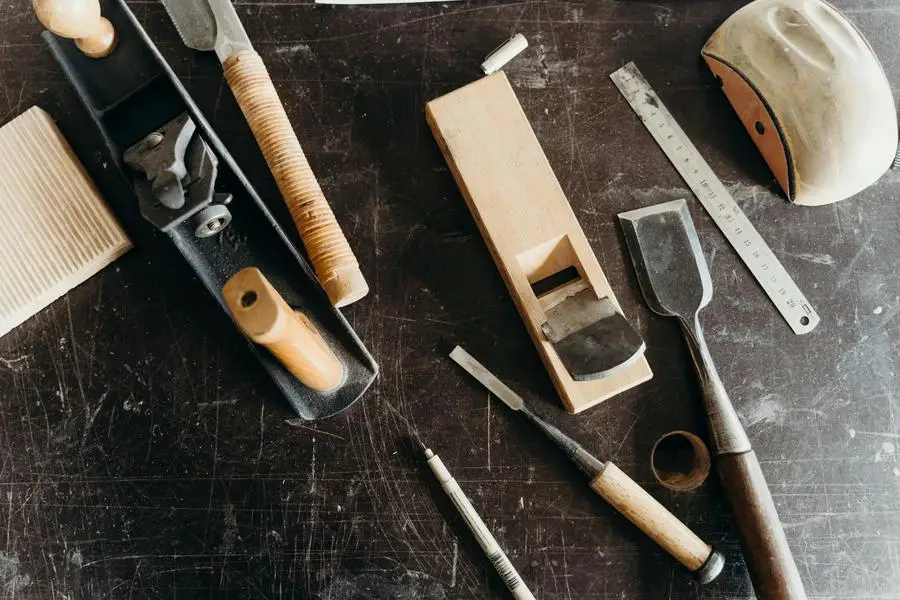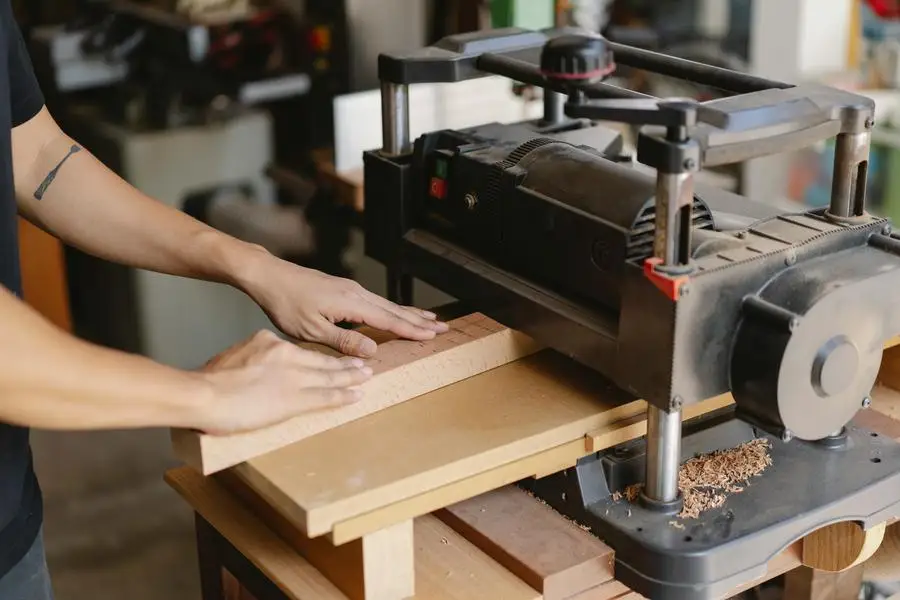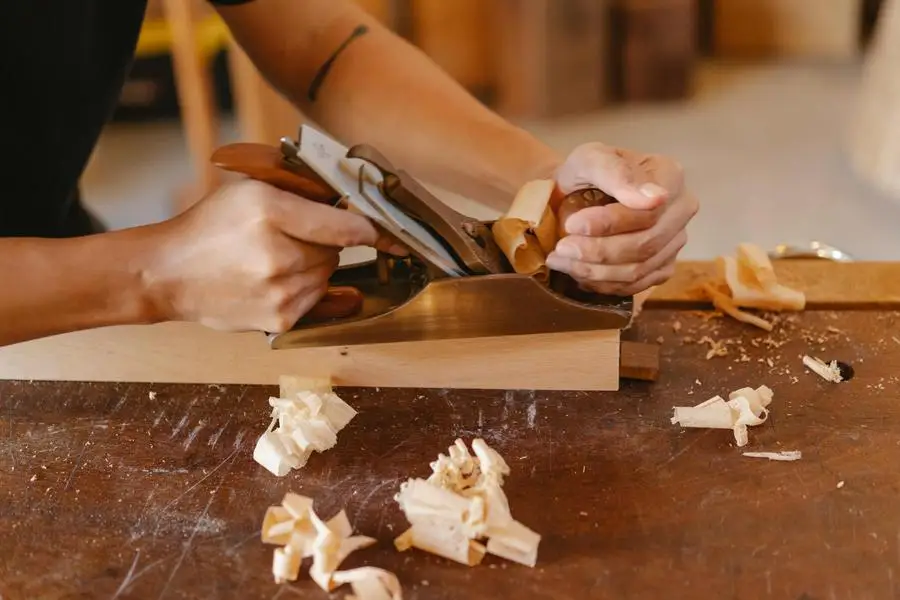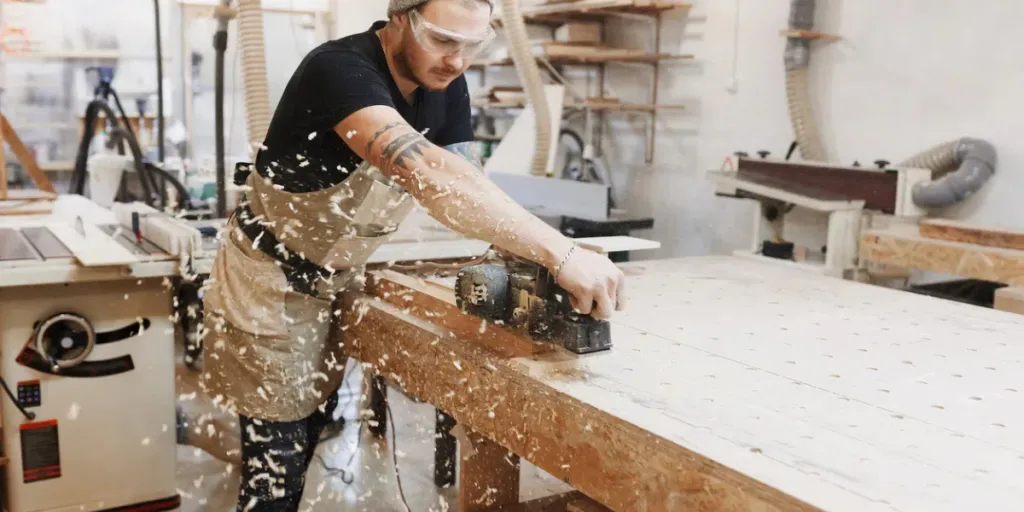Perkenalkan: Pada tahun 2025, pasar alat planer berkembang pesat, didorong oleh kemajuan teknologi dan peningkatan permintaan. Artikel ini memberikan analisis mendalam tentang pemilihan alat planer yang tepat, yang menawarkan wawasan berharga bagi pembeli profesional. Beralih ke teks utama, temukan faktor-faktor penting yang memengaruhi keputusan pembelian Anda.
Daftar Isi:
– Tinjauan Pasar: Industri Alat Planer
– Analisis Mendalam tentang Pasar Alat Planer
– Faktor Kunci Saat Memilih Alat Planer
– Bahan dan Kualitas Bangunan
– Standar dan Sertifikasi Keselamatan
– Daya Tahan dan Kualitas
– Aksesoris dan Add-Ons
– Meramalkan Tren Masa Depan
– Menyimpulkan Wawasan
Tinjauan Pasar: Industri Alat Planer

Pasar alat planer telah mengalami pertumbuhan dan transformasi yang signifikan dalam beberapa tahun terakhir. Pada tahun 2024, pasar alat planer global bernilai sekitar USD 2.57 miliar, dengan proyeksi yang menunjukkan kenaikan menjadi USD 4.29 miliar pada tahun 2030, yang mencerminkan tingkat pertumbuhan tahunan gabungan (CAGR) yang kuat sebesar 8.7%. Pertumbuhan ini didorong oleh meningkatnya permintaan di sektor konstruksi, kemajuan dalam teknologi manufaktur, dan meningkatnya tren proyek perbaikan rumah DIY.
Wilayah geografis utama yang berkontribusi pada pasar ini meliputi Amerika Utara, Eropa, dan Asia-Pasifik. Amerika Utara, khususnya Amerika Serikat, telah mempertahankan pangsa pasar yang signifikan karena tingginya tingkat adopsi peralatan dan mesin konstruksi canggih. Wilayah Asia-Pasifik, yang dipimpin oleh Tiongkok dan India, mengalami urbanisasi dan industrialisasi yang pesat, yang selanjutnya meningkatkan permintaan akan peralatan planer. Selain itu, pasar Eropa menekankan rekayasa presisi dan praktik berkelanjutan, yang berkontribusi pada pertumbuhan yang stabil.
Pasar ini tersegmentasi berdasarkan jenis produk, aplikasi, dan saluran distribusi. Jenis produk meliputi planer genggam, planer meja, dan planer stasioner, dengan planer genggam memegang pangsa pasar terbesar karena keserbagunaan dan kemudahan penggunaannya. Aplikasi mencakup pengerjaan kayu, pengerjaan logam, dan konstruksi, dengan pengerjaan kayu menjadi sektor yang dominan. Saluran distribusi dibagi menjadi daring dan luring, dengan penjualan daring mengalami pertumbuhan signifikan karena kemudahan dan ketersediaan produk yang luas.
Analisis Mendalam tentang Pasar Alat Planer

Pasar alat planer dicirikan oleh beberapa tolok ukur kinerja utama dan dinamika pangsa pasar. Kemajuan berkelanjutan dalam teknologi alat planer, seperti integrasi IoT dan AI untuk meningkatkan presisi dan efisiensi, sangat penting dalam mempertahankan keunggulan kompetitif. Inovasi ini memungkinkan penyesuaian otomatis dan pemantauan waktu nyata, yang secara signifikan mengurangi tenaga kerja manual dan meningkatkan produktivitas.
Dinamika pangsa pasar menunjukkan lanskap persaingan dengan pemain utama seperti Bosch, DeWalt, Makita, dan Stanley Black & Decker yang memimpin pasar. Perusahaan-perusahaan ini secara konsisten berinvestasi dalam penelitian dan pengembangan untuk memperkenalkan produk inovatif yang memenuhi kebutuhan konsumen yang terus berkembang. Faktor ekonomi, seperti harga bahan baku yang berfluktuasi dan ketersediaan tenaga kerja terampil, secara signifikan memengaruhi tren pasar dan perilaku konsumen.
Perilaku konsumen telah bergeser ke arah preferensi untuk peralatan yang berkinerja tinggi dan tahan lama, didorong oleh meningkatnya kesadaran akan kualitas dan efisiensi. Pergeseran ini terlihat jelas dalam permintaan yang meningkat untuk peralatan planer dengan fitur-fitur yang disempurnakan seperti sistem penyedot debu, desain yang ergonomis, dan masa pakai baterai yang lebih lama. Preferensi saluran distribusi juga telah berkembang, dengan peningkatan yang nyata dalam penjualan daring karena kemudahan platform e-commerce dan ketersediaan informasi dan ulasan produk yang terperinci.
Inovasi terkini di pasar alat planer mencakup pengembangan planer nirkabel, yang menawarkan mobilitas dan kemudahan penggunaan yang lebih baik. Tahapan siklus hidup produk menunjukkan pasar yang matang dengan persaingan yang ketat, yang membutuhkan inovasi berkelanjutan dan pemasaran strategis untuk mempertahankan posisi pasar. Digitalisasi telah mengubah pasar, dengan platform digital yang memungkinkan keterlibatan pelanggan yang lebih baik dan manajemen rantai pasokan yang efisien.
Tren sosial, seperti semakin populernya proyek DIY dan munculnya bisnis pertukangan kayu skala kecil, telah semakin mendorong permintaan akan alat serut. Masalah yang dihadapi pelanggan, termasuk kebutuhan akan alat yang lebih terjangkau namun berkualitas tinggi dan perawatan yang lebih mudah, ditangani melalui desain produk yang inovatif dan layanan purnajual. Strategi pemosisian merek berfokus pada penonjolan keandalan produk, kemajuan teknologi, dan layanan yang berpusat pada pelanggan.
Strategi diferensiasi di antara pelaku pasar melibatkan penawaran berbagai macam produk yang melayani berbagai tingkat keterampilan dan aplikasi, beserta dukungan pelanggan dan layanan garansi yang kuat. Pasar khusus, seperti peralatan planer ramah lingkungan dan peralatan khusus untuk pengerjaan kayu yang rumit, menghadirkan peluang pertumbuhan yang signifikan bagi perusahaan yang ingin berinvestasi di segmen ini.
Faktor Kunci Saat Memilih Alat Planer

Memilih alat planer yang tepat untuk bisnis Anda melibatkan pertimbangan beberapa faktor penting. Setiap aspek memengaruhi kinerja, keamanan, dan nilai alat secara keseluruhan, sehingga penting untuk memahami elemen-elemen ini secara menyeluruh.
Jenis dan Gaya Alat Planer
Alat planer tersedia dalam berbagai jenis dan gaya, masing-masing dirancang untuk aplikasi tertentu. Jenis yang paling umum adalah planer genggam, planer meja, dan planer ketebalan. Planer genggam serbaguna dan portabel, ideal untuk penyesuaian cepat dan proyek kecil. Planer meja menawarkan stabilitas lebih dan cocok untuk tugas skala menengah. Planer ketebalan digunakan dalam pengaturan profesional di mana pengurangan ketebalan papan besar yang tepat diperlukan.
Pilihan gaya memengaruhi fungsionalitas dan kemudahan penggunaan alat. Planer genggam ringan dan mudah dioperasikan, tetapi mungkin tidak memiliki daya dan presisi seperti planer meja atau planer ketebalan. Planer meja menyediakan platform yang stabil untuk hasil yang lebih konsisten. Planer ketebalan menawarkan tingkat akurasi dan efisiensi tertinggi, menjadikannya andalan di bengkel profesional.
Kinerja dan Fungsionalitas
Saat mengevaluasi kinerja alat planer, pertimbangkan faktor-faktor seperti daya motor, kedalaman pemotongan, dan laju umpan. Motor yang kuat, biasanya berkisar antara 5 hingga 15 amp, memastikan pemotongan yang halus dan efisien, bahkan pada kayu keras. Kedalaman pemotongan, yang dapat bervariasi dari 1/8 inci hingga 1/4 inci per lintasan, menentukan seberapa banyak material yang dapat dihilangkan dalam satu lintasan, yang memengaruhi kecepatan dan presisi.
Kecepatan umpan, diukur dalam satuan kaki per menit (FPM), memengaruhi efisiensi alat dan kualitas hasil akhir. Kecepatan umpan yang lebih tinggi memungkinkan pemindahan material lebih cepat tetapi dapat mengurangi kehalusan permukaan. Kecepatan umpan yang lebih rendah memberikan hasil akhir yang lebih halus tetapi dapat memperlambat proses. Model yang lebih canggih sering kali memiliki kecepatan umpan yang dapat disesuaikan, yang memungkinkan pengguna untuk menyeimbangkan kecepatan dan kualitas sesuai dengan persyaratan khusus tugas.
Mendesain
Desain alat planer sangat memengaruhi kegunaan dan kenyamanan penggunanya. Pegangan yang ergonomis mengurangi kelelahan selama penggunaan jangka panjang, sementara desain yang seimbang meningkatkan kontrol dan presisi. Alat planer modern sering kali memiliki desain yang ramping dan intuitif dengan tanda dan kontrol yang jelas, sehingga lebih mudah dioperasikan.
Selain itu, penempatan kontrol dan fitur keselamatan juga penting. Akses mudah ke sakelar daya, kenop penyesuaian kedalaman, dan port pengumpulan debu dapat memperlancar alur kerja dan meningkatkan keselamatan. Beberapa model dilengkapi lampu LED internal untuk menerangi area kerja, meningkatkan visibilitas dan akurasi dalam kondisi cahaya redup.
Spesifikasi teknis
Spesifikasi teknis merupakan aspek penting dalam memilih alat planer. Spesifikasi utama meliputi lebar pemotongan, kecepatan kepala pemotong, dan jenis bilah. Lebar pemotongan, yang berkisar dari 5 inci untuk planer genggam hingga 20 inci untuk planer ketebalan industri, menentukan lebar maksimum material yang dapat diproses. Kecepatan kepala pemotong, yang biasanya diukur dalam putaran per menit (RPM), memengaruhi kelancaran pemotongan. RPM yang lebih tinggi menghasilkan hasil akhir yang lebih halus tetapi mungkin memerlukan penggantian bilah yang lebih sering karena peningkatan keausan.
Jenis dan kualitas bilah juga merupakan pertimbangan penting. Bilah baja kecepatan tinggi (HSS) umum digunakan pada model kelas bawah karena harganya terjangkau dan mudah diasah. Namun, bilah berujung karbida menawarkan daya tahan yang lebih unggul dan masa pakai yang lebih lama, menjadikannya pilihan yang lebih baik untuk aplikasi tugas berat. Beberapa planer canggih memiliki kepala pemotong spiral dengan beberapa bilah kecil, yang memberikan hasil akhir yang lebih halus dan pengoperasian yang lebih senyap dibandingkan dengan bilah lurus tradisional.
Kisaran Harga dan Anggaran
Kisaran harga alat planer dapat sangat bervariasi, mulai dari di bawah $100 untuk model genggam dasar hingga lebih dari $1,000 untuk planer ketebalan industri kelas atas. Saat menetapkan anggaran, pertimbangkan kebutuhan spesifik bisnis Anda dan frekuensi penggunaan yang diharapkan. Untuk tugas ringan sesekali, planer genggam yang terjangkau mungkin sudah cukup. Namun, untuk aplikasi profesional atau industri, berinvestasi pada planer ketebalan atau meja berkualitas tinggi dapat menawarkan kinerja, daya tahan, dan nilai jangka panjang yang lebih baik.
Penting juga untuk memperhitungkan biaya aksesori dan perawatan. Pisau pengganti, sistem pengumpulan debu, dan tambahan lainnya dapat menambah biaya keseluruhan. Mengevaluasi total biaya kepemilikan, termasuk harga pembelian awal dan biaya perawatan berkelanjutan, dapat membantu dalam membuat keputusan yang lebih tepat.
Bahan dan Kualitas Bangunan

Bahan dan kualitas pembuatan alat planer secara langsung memengaruhi ketahanan dan kinerjanya. Planer berkualitas tinggi biasanya dibuat dari bahan yang kuat seperti besi cor atau baja tugas berat, yang memberikan stabilitas dan mengurangi getaran selama pengoperasian. Kepala pemotong dan bilah harus terbuat dari baja atau karbida bermutu tinggi untuk memastikan keawetan dan presisi.
Komponen plastik, meskipun mengurangi berat dan biaya, mungkin tidak menawarkan tingkat ketahanan yang sama seperti komponen logam. Oleh karena itu, penting untuk menilai kualitas pembuatan, terutama untuk komponen yang mengalami tekanan dan keausan tinggi. Berinvestasi pada alat dengan bahan dan konstruksi yang unggul dapat menghasilkan kinerja yang lebih baik dan masa pakai yang lebih lama, yang pada akhirnya memberikan nilai yang lebih baik untuk uang.
Standar dan Sertifikasi Keamanan

Kepatuhan terhadap standar dan sertifikasi keselamatan sangat penting saat memilih alat planer. Carilah alat yang mematuhi standar keselamatan yang diakui seperti yang ditetapkan oleh Occupational Safety and Health Administration (OSHA) atau International Electrotechnical Commission (IEC). Sertifikasi ini memastikan bahwa alat tersebut telah diuji dan memenuhi persyaratan keselamatan yang ketat.
Fitur keselamatan seperti pelindung mata pisau, sakelar penghenti darurat, dan proteksi kelebihan beban sangat penting untuk mencegah kecelakaan dan cedera. Selain itu, beberapa model dilengkapi dengan sistem penghisapan debu internal untuk mengurangi partikel di udara, sehingga meningkatkan keselamatan dan kebersihan di tempat kerja. Memastikan bahwa alat planer memenuhi semua standar keselamatan yang relevan dan mencakup fitur keselamatan yang diperlukan dapat melindungi pengguna dan meningkatkan keselamatan operasional secara keseluruhan.
Daya Tahan dan Kualitas

Daya tahan dan kualitas alat planer merupakan faktor penting yang memengaruhi kinerja dan keawetannya. Planer berkualitas tinggi dibuat untuk menahan penggunaan berat dan mempertahankan presisinya dari waktu ke waktu. Komponen utama seperti motor, kepala pemotong, dan bilah harus terbuat dari bahan yang tahan lama dan dirancang untuk menangani tuntutan pengoperasian berkelanjutan.
Perawatan rutin, termasuk penajaman atau penggantian bilah dan pelumasan komponen yang bergerak, sangat penting untuk memastikan keawetan alat. Beberapa model dilengkapi sistem perawatan mandiri, seperti penyetelan bilah otomatis atau pelumasan internal, yang dapat menyederhanakan perawatan dan memperpanjang masa pakai alat. Berinvestasi pada alat planer yang tahan lama dan berkualitas tinggi dapat mengurangi waktu henti dan biaya perawatan, sehingga memberikan nilai jangka panjang yang lebih baik.
Aksesori dan Pengaya

Aksesori dan tambahan dapat meningkatkan fungsionalitas dan keserbagunaan alat serut. Aksesori umum meliputi sistem pengumpul debu, meja ekstensi, dan peralatan penajaman bilah. Sistem pengumpul debu sangat penting untuk menjaga tempat kerja tetap bersih dan aman, karena membantu menangkap dan menampung serutan kayu dan debu yang dihasilkan selama pengoperasian.
Meja ekstensi menyediakan dukungan tambahan untuk benda kerja yang lebih panjang, meningkatkan stabilitas dan presisi. Kit penajaman bilah memungkinkan pengguna untuk mempertahankan ketajaman bilah mereka, memastikan kinerja yang konsisten. Tambahan bermanfaat lainnya dapat mencakup pembacaan digital untuk penyesuaian kedalaman yang tepat, rol pemasukan dan pengeluaran untuk penanganan material yang lebih halus, dan bilah khusus untuk berbagai jenis kayu.
Peramalan Tren Masa Depan

Ke depannya, pasar alat planer diperkirakan akan mengalami kemajuan dalam otomatisasi dan teknologi pintar. Model masa depan mungkin dilengkapi konektivitas yang lebih baik, yang memungkinkan pemantauan dan kontrol jarak jauh melalui perangkat seluler. Integrasi dengan perangkat lunak desain berbantuan komputer (CAD) dapat memungkinkan penyesuaian yang lebih tepat dan otomatis, sehingga meningkatkan efisiensi dan akurasi.
Keberlanjutan juga kemungkinan akan menjadi fokus yang lebih menonjol, dengan produsen mengeksplorasi bahan yang ramah lingkungan dan desain yang hemat energi. Inovasi dalam teknologi mata pisau, seperti bahan yang dapat mengasah sendiri atau bahan yang lebih tahan lama, dapat lebih meningkatkan kinerja alat dan mengurangi kebutuhan perawatan. Tetap terinformasi tentang tren ini dapat membantu bisnis membuat keputusan investasi yang berwawasan ke depan.
Menyimpulkan Wawasan
Singkatnya, memilih alat planer yang tepat memerlukan pertimbangan cermat dari berbagai faktor, termasuk jenis dan gaya, kinerja dan fungsionalitas, desain, spesifikasi teknis, kisaran harga, bahan dan kualitas pembuatan, standar keselamatan, daya tahan, aksesori, dan tren masa depan. Dengan mengevaluasi aspek-aspek ini secara menyeluruh, bisnis dapat memilih alat planer yang memenuhi kebutuhan spesifik mereka, meningkatkan produktivitas, dan menawarkan nilai jangka panjang.




